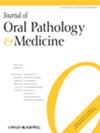Tumor Cells-Derived FGF-2 Promotes Lymphangiogenesis as a Prognostic Marker in OSCC
Abstract
Background
The “cold” tumor microenvironment of oral squamous cell carcinoma (OSCC), where tumor-associated lymphatic vessels play a critical role in the transport of immune cells, is associated with a poor prognosis. However, the effect of tumor-induced lymphangiogenesis on CD8+ T cell infiltration and its role in the formation of the tumor immune microenvironment remain unclear.
Methods
We analyzed the prognostic significance of several lymphangiogenesis factors in OSCC with The Cancer Genome Atlas dataset, and confirmed the impact of fibroblast growth factor-2 (FGF-2) on prognosis in tissue specimens. Subsequently, we investigated the effects of FGF-2 on the proliferation, migration, and tube formation capacities of lymphatic endothelial cells, and CD8+ T cell infiltration through in vivo and in vitro experiments. Survival analysis was performed by Kaplan–Meier analysis and log-rank tests. The hazard ratio was calculated by Cox proportional hazards model.
Results
Patients with high FGF-2 levels and increased numbers of peritumoral lymphatic vessels were associated with a worse prognosis. Furthermore, we demonstrated that tumor cell-derived FGF-2 promoted lymphangiogenesis by regulating the FGFR1/PTEN/AKT axis and increased the secretion of CXCL9 to recruit and egress CD8+ T cells via neo-lymphatic vessels. PD-166866, an inhibitor of FGFR1, suppressed lymphangiogenesis and the secretion of CXCL9 to increase CD8+ T cell infiltration and inhibit tumor progression.
Conclusions
Our data suggest that FGF-2 is a significant prognostic factor that induces lymphangiogenesis and affects intratumoral CD8+ T cells, contributing to the formation of a “cold” tumor microenvironment in OSCC. FGF-2/FGFR1 could serve as an effective target for improving the prognosis of OSCC.

 求助内容:
求助内容: 应助结果提醒方式:
应助结果提醒方式:


